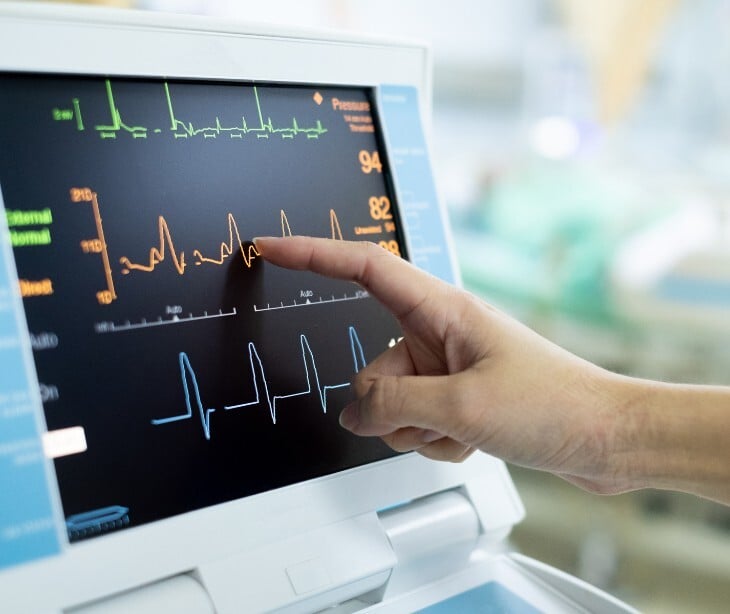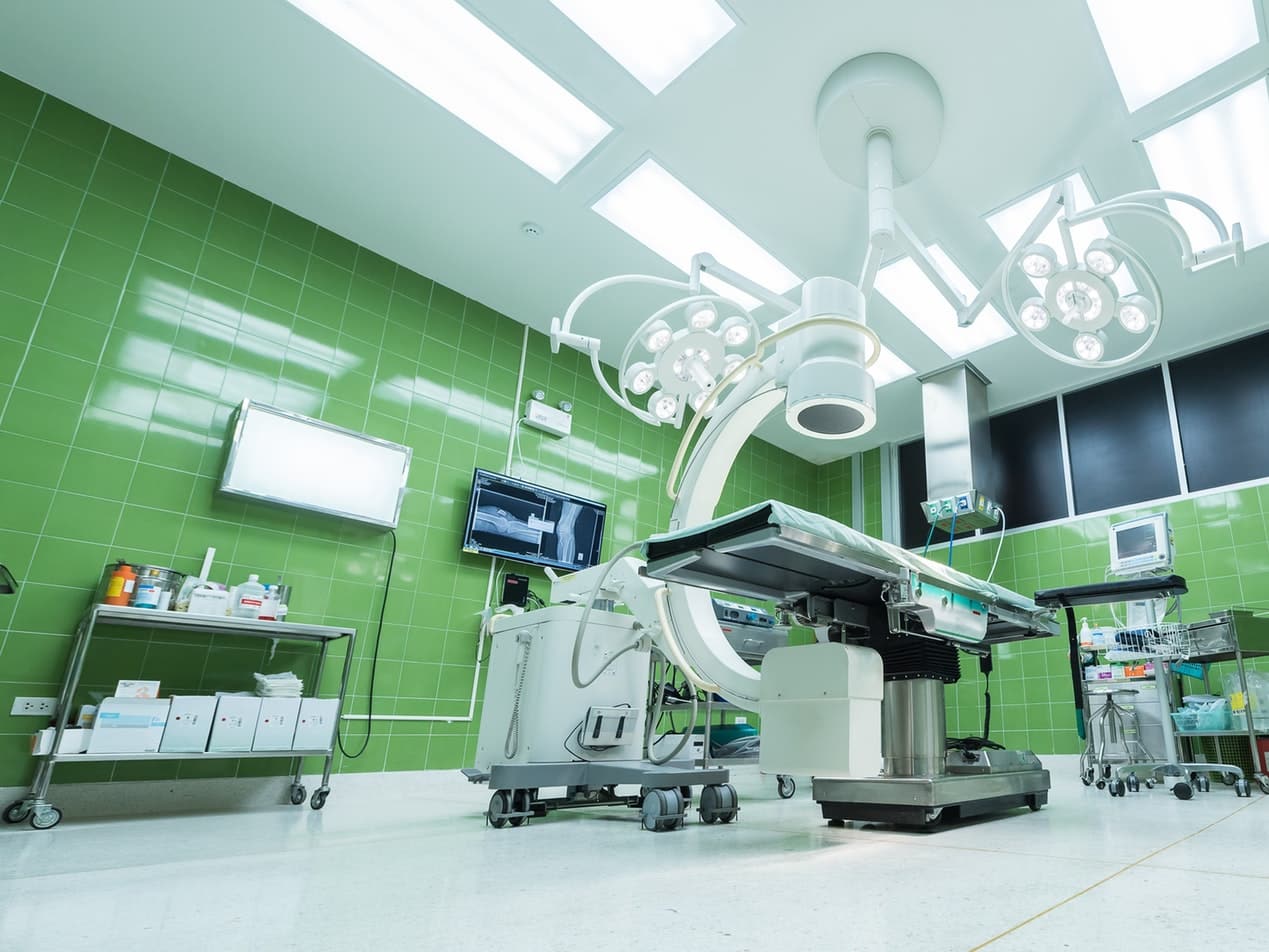7 min read
How legacy medical devices create backdoors into hospital networks
Lusanda Molefe June 20, 2025

While medical innovations have created time–and life-saving–results for patients and professionals, legacy medical devices can also create loopholes for accessing hospital networks. Many life-saving devices like infusion pumps delivering precise medication dosages, MRI scanners providing detailed diagnostic images, patient monitors tracking vital signs in real-time, and ventilators sustaining life, are "legacy" systems operating on outdated software, running end-of-life operating systems, and designed during an era when connectivity was prioritized over cybersecurity. These devices, now integral parts of the rapidly expanding Internet of Medical Things (IoMT), create dangerous and persistent backdoors into hospital networks.
As Axel Wirth, Chief Security Strategist at Medcrypt and consultant for the Healthcare Sector Coordinating Council's Cybersecurity Working Group, explains, "Although any networked medical device could be compromised by an attacker, legacy devices elevate the risks resulting from two categories of weaknesses: by exposing vulnerabilities that can no longer be patched, and through poor design decisions that were made in times of lower security awareness and regulatory requirements."
Academic research reinforces these concerns. A scientific review published by the Institute of Electrical and Electronics Engineers (IEEE) confirms that "medical devices frequently lack basic security features and run legacy operating systems and software with publicly known vulnerabilities." Their research identified 18 distinct solutions for mitigating these risks, stressing the scope and complexity of the challenge facing healthcare organizations.
Why outdated devices persist in healthcare
A medical device becomes a "legacy" security risk not simply due to age, but because of its deteriorating security posture and support status. Legacy medical devices exhibit several dangerous characteristics: they run on unsupported, end-of-life operating systems such as Windows XP or Windows 7, which no longer receive security patches from manufacturers, contain hard-coded or default credentials that cannot be changed, and use unencrypted communication protocols that expose sensitive data during transmission.
The scientific paper above provides additional context, noting that these vulnerabilities persist due to "equipment in use that no longer receives vendor support, or because of the difficulty of applying patches to device software." The researchers emphasize that "certification requirements can make patching medical devices difficult: for example, when an update to a CE certified device is considered a major revision it is mandatory to perform extensive testing before this patch can be released."
These devices represent a significant portion of hospital infrastructure. As mentioned in a recent congressional hearing on legacy medical device cybersecurity, there exists a fundamental "misalignment between the lifecycle of the physical devices (10–15 years) and the software embedded in such devices (3–5 years)" that "leads to increased risk of cybersecurity vulnerabilities as devices remain in use long after companies cease to support the software inside them." The FBI has warned that such "unpatched medical devices may have vulnerabilities that could impact healthcare facilities' operations, patient safety, and the confidentiality and integrity of medical information," creating a fundamental security paradox where devices designed to save lives may simultaneously expose entire hospital networks to catastrophic cyber attacks.
Why legacy devices stick around
Despite their security risks, legacy medical devices persist in healthcare environments for compelling financial and logistical reasons that have gained official recognition at the highest levels of government. The recent congressional hearing on legacy medical device cybersecurity revealed that healthcare organizations "cannot afford to decommission and purchase new devices solely due to cybersecurity concerns," proving the economic reality that forces institutions to maintain vulnerable equipment.
The distributed nature of healthcare delivery further complicates replacement strategies. As authors in the scientific paper note, many vulnerable devices are "wearable or implantable medical devices brought home by patients," making centralized management and replacement significantly more challenging than traditional IT infrastructure. Hospitals must coordinate not only internal device management but also patient education and remote device monitoring across diverse home environments.
Congressional testimony revealed additional systemic barriers, including workforce constraints and competing priorities. Healthcare organizations face what experts described as "shared responsibility across device manufacturers and healthcare delivery organizations," but this distributed accountability often results in delayed action as stakeholders debate who should bear the cost and responsibility for addressing legacy device vulnerabilities.
The economic pressure is severe for smaller healthcare providers. While large health systems may have dedicated cybersecurity budgets and IT staff, smaller practices and rural hospitals often operate on thin margins that make large-scale device replacement financially devastating. This creates a healthcare cybersecurity divide where the most resource-constrained organizations, often serving the most vulnerable populations, face the greatest legacy device risks.
How legacy devices expose your network
Category 1: Unpatchable vulnerabilities
The most fundamental security weakness of legacy medical devices stems from their reliance on end-of-life operating systems and software components that no longer receive security updates. When manufacturers cease support for underlying systems, known vulnerabilities become permanently embedded in the device, creating what security experts call "unpatchable" risks.
The 2017 WannaCry ransomware attack provides a stark illustration of this vulnerability. This global cyberattack devastated healthcare systems worldwide by exploiting a known vulnerability in older, unpatched Windows systems, precisely the type of operating environment still running on many medical devices today. Hospitals in the UK's National Health Service were forced to cancel thousands of appointments and divert emergency patients as the malware spread through networks via vulnerable endpoints, including medical devices.
The scientific paper reinforces this idea, noting that these devices "have publicly known vulnerabilities" that create permanent security gaps in hospital networks.
The research also emphasizes the attractiveness of healthcare targets, noting that "medical information can be more than ten times more valuable than credit card numbers on the black market, because it can, for example, be used to get access to drugs or to perform insurance fraud." This creates a permanently open door that attackers can exploit at will, knowing that no security patch will ever close these vulnerabilities.
Category 2: Insecure by design
Beyond unpatchable vulnerabilities, many legacy medical devices suffer from fundamental security design flaws implemented during an era when connectivity was prioritized over cybersecurity considerations. These "insecure by design" characteristics create multiple attack vectors that persist regardless of network security measures.
Hard-coded credentials represent one of the most dangerous design flaws. Many legacy devices ship with default usernames and passwords, often combinations like "admin/admin" or "service/password," that cannot be changed by healthcare organizations. These credentials are frequently documented in publicly available service manuals or can be easily discovered through internet searches, providing attackers with immediate access to device controls.
The scientific research paper systematically categorizes these design flaws, identifying that legacy devices often use "insecure legacy protocol[s]" and lack proper authentication mechanisms. Their findings show that many existing implantable medical devices "employ no or broken cryptography," creating fundamental security gaps that cannot be addressed through network-level protections alone.
Unencrypted communication protocols compound these risks. Legacy devices often transmit sensitive data, including patient information, device status, and control commands, in clear text across hospital networks. Open ports left available for maintenance access create additional entry points, while insecure remote management interfaces allow potential attackers to control devices from anywhere on the network.
From device to network breach
The most insidious aspect of legacy device vulnerabilities lies not in the compromise of individual devices but in their potential to serve as stepping stones for broader network infiltration. Cybersecurity professionals refer to this progression as "lateral movement", the process by which attackers use an initially compromised system to explore and attack other network resources.
The researchers in the IEEE paper note that "medical devices in hospitals, such as blood gas analyzers, MRI scanners and X-Ray equipment, have been found to be compromised by attackers. These devices have been subsequently abused as a stepping stone to laterally move through the hospital networks."
A single vulnerable infusion pump, for example, doesn't represent just a device-level security incident. Once compromised, it becomes a trusted insider on the hospital network, complete with legitimate network access and the ability to communicate with other systems. Attackers can use this foothold to scan the network for additional vulnerabilities, identify high-value targets such as Electronic Health Record servers or financial databases, and ultimately launch devastating attacks like hospital-wide ransomware deployment.
The IEEE research discusses the potential for future "physical ransomware" attacks that could "conditionally disable critical (medical) hardware." This threat is not theoretical; the researchers cite an incident where "an Austrian hotel was targeted by a strain of ransomware that deactivated room keys and kept all doors locked until the ransom was paid," demonstrating how device compromise could directly impact operations and potentially patient care.
This lateral movement capability transforms isolated device vulnerabilities into enterprise-level security threats. As Wirth notes, compromised devices "can give an attacker an opening to exploit the device itself or to use it as an entry point to the larger hospital network." The result is that a legacy medical device purchased years ago for clinical purposes may now serve as an unintended backdoor, providing cybercriminals with access to the organization's most sensitive systems and data.
Managing the unpatchable risk
Since legacy medical devices cannot be patched or fundamentally secured, effective risk management begins with comprehensive visibility into device inventory and network behavior. As Wirth emphasizes, "All of this requires good device inventory visibility and mapping of devices' normal network traffic." Organizations cannot protect assets they cannot identify or monitor.
Achieving this visibility requires sophisticated monitoring capabilities that don't disrupt medical device operations. Wirth specifically recommends Passive Network Monitoring (PNM) solutions that can identify devices and map their network communication patterns without actively scanning them, a critical distinction since active scanning might disrupt sensitive medical equipment operations. As he notes, "There are commercial solutions available that support both, typically referred to as Passive Network Monitoring (PNM)."
Strategic isolation and containment
With comprehensive device visibility established, the core mitigation strategy focuses on isolation and containment. Since the devices themselves cannot be secured, organizations must create protective barriers that limit potential damage from compromise.
Wirth provides specific guidance on isolation techniques: "The advisable practice would be to isolate legacy devices as much as possible. Available technologies would be network segmentation (e.g., through traditional VLAN or through more modern approaches such as micro-segmentation or software defined networks (SDN)), or the use of firewalls by either restricting external traffic into the network or, for high risk devices, provide a dedicated firewall for the device itself."
Network segmentation represents the most fundamental isolation technique. Traditional VLAN (Virtual Local Area Network) implementation provides an effective method for grouping similar devices and restricting traffic between different network segments. For example, all infusion pumps might be placed on a dedicated VLAN that can only communicate with specific medication management servers, preventing compromised pumps from accessing other network resources.
Micro-segmentation and SDNs offer more advanced, granular approaches that enable "Zero Trust" principles at the device level. These technologies allow organizations to create highly specific communication rules where each device can only access the exact servers and services necessary for its clinical function, and nothing else.
Firewall implementation provides additional protection through strict traffic control. For extremely high-risk or critical equipment, Wirth specifically recommends organizations "provide a dedicated firewall for the device itself," creating an additional security layer around the most vulnerable assets.
Acknowledging technical limitations
While these mitigation strategies provide significant risk reduction, Wirth acknowledges important limitations that healthcare organizations must consider: "However, there may be some limitations with older devices as they may lack modern networking capabilities that would be required to operate in a highly segmented or zero trust environment."
The scientific research provides additional context on these limitations, noting that some legacy devices may require specific network configurations or protocols that are incompatible with advanced security measures. Their systematic review identified various approaches to work around these constraints, including specialized intrusion detection systems and communication tunneling solutions designed specifically for medical device environments.
For devices that cannot be effectively isolated through network controls, Wirth suggests that "physical isolation or replacement [may be] the only viable options." This acknowledgment proves the reality that some legacy devices may be so fundamentally insecure that no mitigation strategy short of replacement can adequately reduce risk.
FAQs
What is cryptography?
Cryptography is the practice of securing information by converting it into unreadable code that can only be deciphered by authorized parties with the proper key. In medical devices, cryptography protects patient data and device communications through encryption, authentication, and digital signatures. Many legacy medical devices lack proper cryptographic protections, leaving their communications vulnerable to interception and tampering.
What is network infiltration?
Network infiltration is the process by which attackers gain unauthorized access to computer networks and move between connected systems. In healthcare, attackers often start by compromising a vulnerable medical device, then use that foothold to explore the network, identify valuable targets like patient databases, and launch broader attacks. This "lateral movement" transforms a single device compromise into an enterprise-wide security breach.
What is CE certification and why does it make patching medical devices difficult?
CE stands for "Conformité Européenne" (European Conformity) - a certification required for medical devices sold in the European Union. When manufacturers update device software to fix security vulnerabilities, it often triggers a complete re-certification process involving extensive testing and regulatory review that can take months or years and cost hundreds of thousands of dollars. Similar regulatory barriers exist with FDA approval and other frameworks worldwide, making security patches extremely expensive and time-consuming to deploy.
Subscribe to Paubox Weekly
Every Friday we'll bring you the most important news from Paubox. Our aim is to make you smarter, faster.




